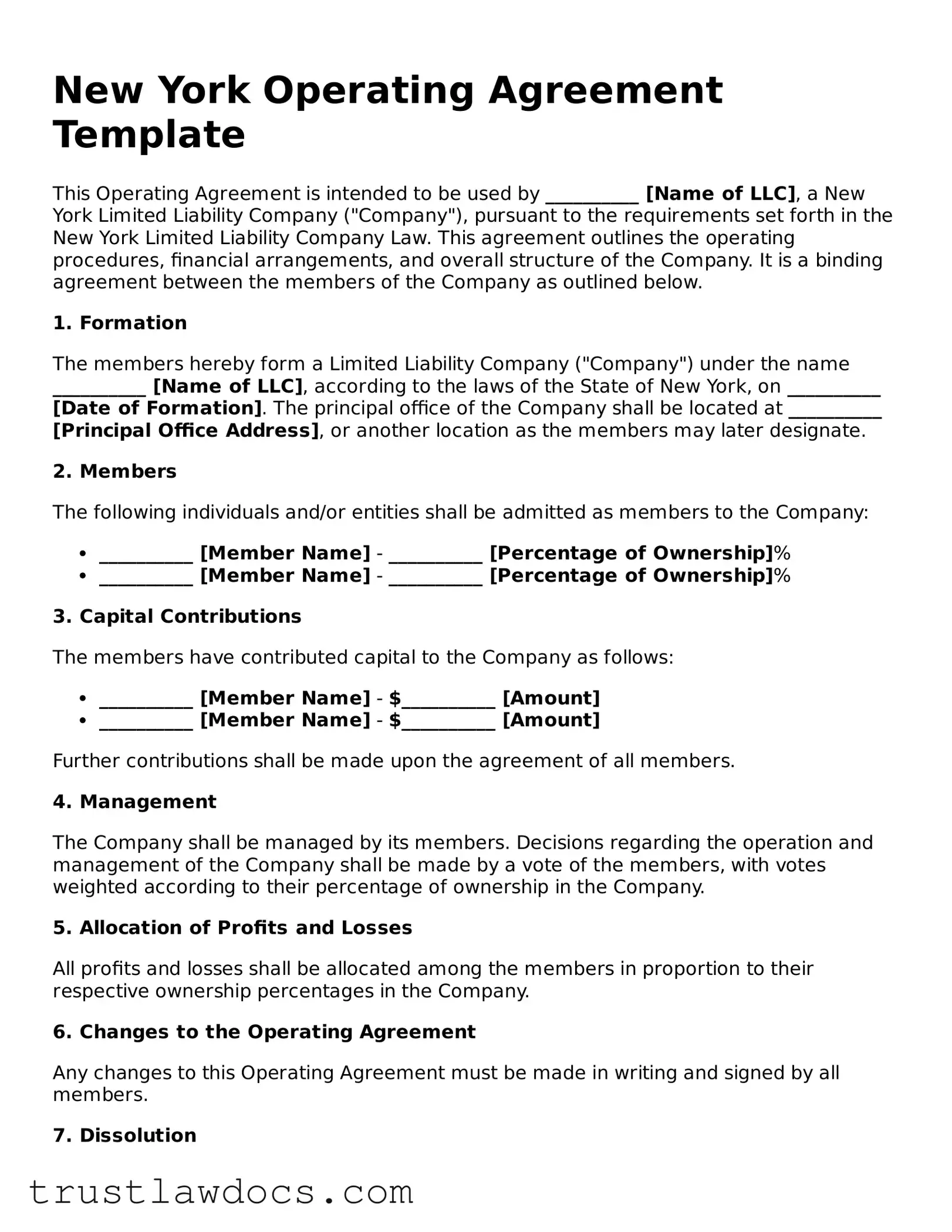New York Operating Agreement Template
This Operating Agreement is intended to be used by __________ [Name of LLC], a New York Limited Liability Company ("Company"), pursuant to the requirements set forth in the New York Limited Liability Company Law. This agreement outlines the operating procedures, financial arrangements, and overall structure of the Company. It is a binding agreement between the members of the Company as outlined below.
1. Formation
The members hereby form a Limited Liability Company ("Company") under the name __________ [Name of LLC], according to the laws of the State of New York, on __________ [Date of Formation]. The principal office of the Company shall be located at __________ [Principal Office Address], or another location as the members may later designate.
2. Members
The following individuals and/or entities shall be admitted as members to the Company:
- __________ [Member Name] - __________ [Percentage of Ownership]%
- __________ [Member Name] - __________ [Percentage of Ownership]%
3. Capital Contributions
The members have contributed capital to the Company as follows:
- __________ [Member Name] - $__________ [Amount]
- __________ [Member Name] - $__________ [Amount]
Further contributions shall be made upon the agreement of all members.
4. Management
The Company shall be managed by its members. Decisions regarding the operation and management of the Company shall be made by a vote of the members, with votes weighted according to their percentage of ownership in the Company.
5. Allocation of Profits and Losses
All profits and losses shall be allocated among the members in proportion to their respective ownership percentages in the Company.
6. Changes to the Operating Agreement
Any changes to this Operating Agreement must be made in writing and signed by all members.
7. Dissolution
The Company may be dissolved upon the agreement of __________ [Percentage]% of the members. Upon dissolution, the assets of the Company shall be liquidated, and the proceeds distributed to the members according to their respective ownership percentages after all debts and liabilities of the Company have been paid.
8. Governing Law
This Operating Agreement shall be governed by and construed in accordance with the laws of the State of New York.
This Operating Agreement has been executed on __________ [Date] by the members below:
- __________ [Member Name & Signature]
- __________ [Member Name & Signature]
